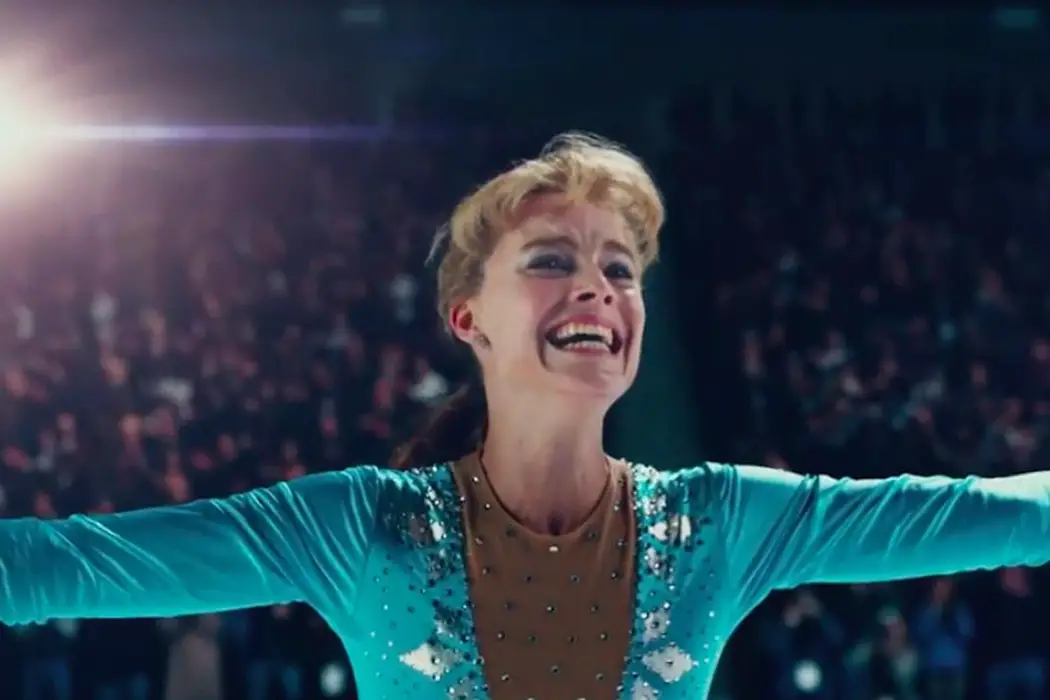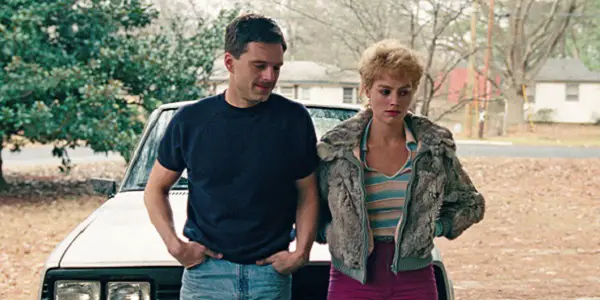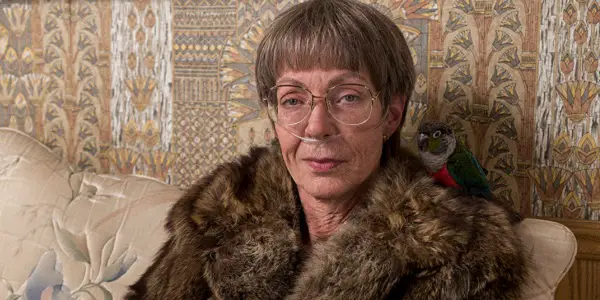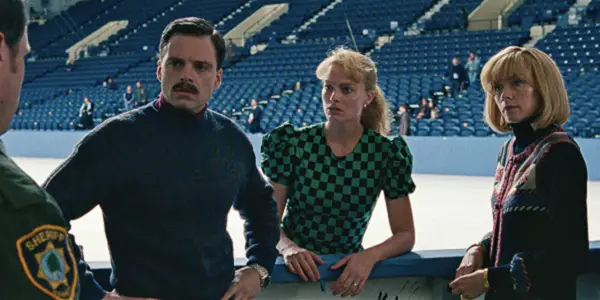I, TONYA: Being Bad Never Looked So Good

Lee Jutton has directed short films starring a killer toaster,…
In her excellent book Trainwreck: The Women We Love to Hate, Mock, and Fear…and Why, author Sady Doyle looks at various women throughout history who have been described as trainwrecks and examines what they all have in common. These women are typically one or more types of “too much”: too loud, too sexual, too ambitious, too emotional, too much of any quality deemed unfeminine by the societal powers that be.
These women are the ones who misbehave, who don’t do what is expected of them, who defy the patriarchy – and all too frequently, they suffer for their actions. They are subject to mockery and meanness, and treated as though there is something unnatural about them, when in reality, there is nothing more natural than being a complex, complicated woman.
Watching I, Tonya, director Craig Gillespie’s bold and brilliant new biopic of notorious figure skater Tonya Harding, I couldn’t help but be reminded of Doyle’s book. As portrayed in Gillespie’s film by Australian actress Margot Robbie, Harding is the epitome of a trainwreck: the kind of woman who sneaks cigarettes that she puts out with her skate blade, performs skate routines to ZZ Top songs while wearing blue nail polish, confronts figure skating judges for giving her marks less than what she believes she deserves, and keeps returning to the same bad husband despite his violent abuse.
She doesn’t fit the mold of what a perfect woman is deemed to be; rather, she smashes the mold to pieces while screaming profane insults. But is she also the kind of woman who would arrange to have a rival’s knee bashed in before a big competition?
“I Was the Best Figure Skater In The World, At One Point In Time”
I, Tonya doesn’t provide any concrete answers regarding Harding’s role in the infamous attack on Nancy Kerrigan prior to the 1994 national figure skating championships. Rather, it seeks to show us a side of Harding that the media frenzy of the 1990s left largely in the dark: that of a fierce competitor who saw figure skating as her only way out of a dead-end life.
Using the format of a mockumentary, it gives Harding – in the form of Robbie – a chance to tell her side of the story. It begins with a barely four-year-old Harding being taken to the rink by her waitress mother, LaVona (Allison Janney), and using her already considerable talent to earn her way into a class for much older girls. From there, Harding rises through the ranks of American figure skating despite her mother’s rampant abuse and her family’s lack of financial resources.
Desperate to get away from LaVona, she rushes into a marriage with Jeff Gillooly (Sebastian Stan), despite the fact that he is just as abusive as her mother. However, it’s clear that Harding has been raised to believe she deserves everything she gets – both the abuse at home and the success on the rink.

Harding relies on her unparalleled athletic ability to impress, including being the first American woman to land a triple axel jump, and assumes that’s enough; she refuses to put on an act for the benefit of the judges, and it costs her. The one time she makes a concession to their demands ends up being the costliest mistake she could have made: when one judge tells her they want the United States to be represented by a girl with an all-American family, she decides to go back to Gillooly despite having already taken out numerous restraining orders against him.
Resentful of Kerrigan, who represents everything she is not, and inspired by the death threat that Harding herself received before a competition, Gillooly and Harding decide to send Kerrigan some threatening letters to mess with her head. Or at least, that’s what they say they thought they were doing…
“My Entire Life, I’ve Been Told I Would Never Amount To Anything”
I, Tonya is a film packed to the brim with larger-than-life characters; fortunately, the ensemble cast does an admirable job at bringing them all to life without veering into gimmickry. Sebastian Stan delivers the best work of his career as Gillooly, a sad-sack character completely devoid of the gritted jaw and angst-ridden heroism that Stan relies on in his role as the Winter Soldier in Marvel’s Captain America films.
Gillooly is a wife beater and an idiot, yet Stan manages to showcase the humor in him without you feeling too gross for laughing. (It helps that you’re definitely laughing at him, and not with him.) Even more unpleasant is Harding’s mother, LaVona – a woman who verbally and physically abused her daughter for years and then claimed that it was only because of her abuse that Tonya became a champion.
It’s hard to find any redeeming qualities in LaVona; fortunately, she is portrayed in I, Tonya by the great Allison Janney, whose spiky delivery of every profanity-ridden line of dialogue feels straight out of a master class in monstrous comedy.

Other strong supporting turns come from Julianne Nicholson as Tonya’s frosty, upper-crust coach, Diane Rawlinson, Bobby Cannavale as the incredibly orange Hard Copy producer who exploited the Kerrigan fiasco for ratings, and Paul Walter Hauser as Shawn Eckhardt, the self-proclaimed international terrorism expert who orchestrated the attack on Kerrigan and bungled it in a way that nothing has been bungled before or since.
But the real star is Robbie, who disappears into Harding’s poofy bangs, homemade skating costumes and brash accent and turns one of pop culture’s most infamous villains into an anti-heroine that you can’t help but root for, even when she throws a skate at Diane in a fit of rage and curses out the judges who use her less-than-polished persona as an excuse to give her low marks. Harding is not very likable, but she is understandable, and that is due in large part to Robbie’s electric and empathetic performance.
Special credit must also be given to costume designer Jennifer Johnson, who reimagines the best and boldest looks of the 1990s down to the last bedazzled scrunchie. Her impeccably detailed work, which includes recreations of Harding’s most famous skating costumes, gives I, Tonya an authentic quality even at its most unbelievable. The rich color palette of the entire production, from costumes to set dressing and beyond, only aids to the film’s already considerable energy.
“The Haters Always Say, ‘Tonya, Tell The Truth.’”
I, Tonya is not your traditional, trope-laden biopic, and that’s one of the best things about it. To tell the story of Tonya Harding as a dark mockumentary, including numerous staged interviews and instances of breaking the fourth wall to declare that whatever is currently happening onscreen actually never occurred, requires a filmmaker of incredible confidence and creativity.
It should come as no surprise that the director best known for the quirky yet surprisingly heartfelt Lars and the Real Girl was the perfect person to take on such a challenge. Craig Gillespie takes the film’s deliciously snarky script, which writer Steven Rogers (best known for gooey romantic comedies like Stepmom and Hope Floats) based on two wildly contradictory sets of interviews conducted with the real Harding and Gillooly, and makes the most of the outrageous story.

In interviews, Margot Robbie has insisted that she had never heard of Tonya Harding until she read the script for I, Tonya; when reading it, she assumed it was fiction, because there was no way such an absurd sequence of events could have ever played out like that in real life. And indeed, as long as Harding and Gillooly continue to deliver different versions of the events that occurred, we likely never will know exactly how what the film sinisterly and hilariously refers to as “the incident” went down.
Yet that is part of the charm of I, Tonya – it explores the various versions of “truth” espoused by Harding and Gillooly in their interviews with Rogers and allows the audience to come to their own conclusions about who was really to blame for what happened. As Harding says towards the end of the film, “The haters always say, ‘Tonya, tell the truth.’ There’s no such thing as truth! Everyone has their own truth.” There’s no better way to sum up the acerbic, chaotic delight of I, Tonya.
I, Tonya
I, Tonya takes a sympathetic look at Tonya Harding’s life without glossing over the unpleasant parts of her personality; it doesn’t try to excuse her bad behavior, but it does try to understand what led her to behave that way in the first place. It portrays Harding as someone incredibly talented who, because of her innate inability to play the part of the all-American sweetheart, was never given a fair shot in the image-obsessed world of figure skating.
This unfairness led to bitterness, and then self-sabotage. One cannot absolve Harding completely for what happened to her career, but after watching I, Tonya, one cannot help but feel complicit in her downfall. After all, this is what we do to the women who don’t fit society’s shockingly old-fashioned ideals of what the perfect woman should be: we turn them into the villains of our stories before they get a chance to tell their own.
What do you think? Does Tonya Harding sound like a character with whom you could sympathize, or does she strike you as someone unworthy of redemption? Share your thoughts in the comments below.
I, Tonya is released in the U.S. on December 8, 2017 and in the UK on February 23, 2018. You can find more international release dates here.
Does content like this matter to you?
Become a Member and support film journalism. Unlock access to all of Film Inquiry`s great articles. Join a community of like-minded readers who are passionate about cinema - get access to our private members Network, give back to independent filmmakers, and more.
Lee Jutton has directed short films starring a killer toaster, a killer Christmas tree, and a not-killer leopard. Her writing has appeared in publications such as Film School Rejects, Bitch: A Feminist Response to Pop Culture, Bitch Flicks, TV Fanatic, and Just Press Play. When not watching, making, or writing about films, she can usually be found on Twitter obsessing over soccer, BTS, and her cat.













